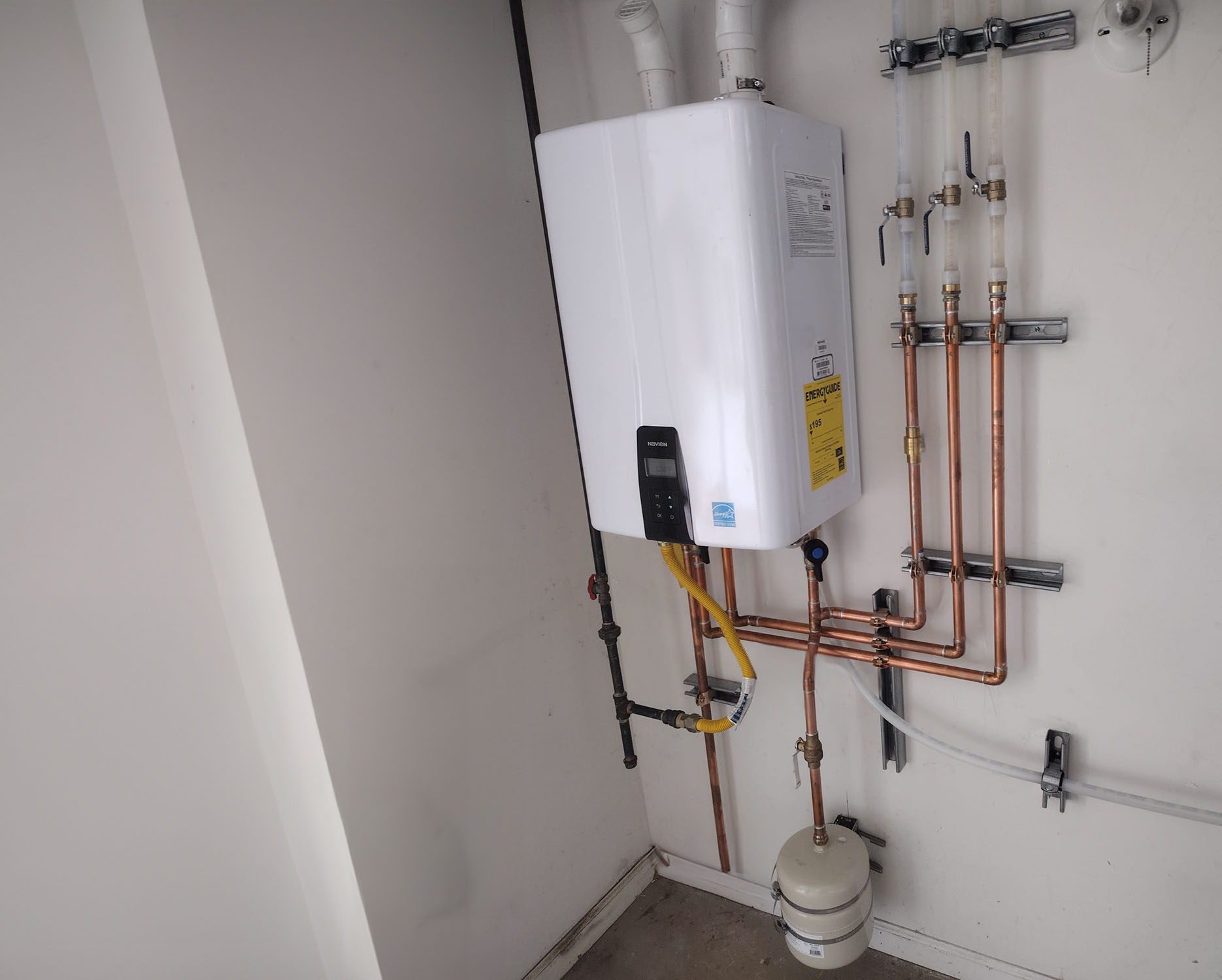

Seamless Installation Process
Your trusted partner for professional home services. Quality workmanship, guaranteed satisfaction.




- HEP
- Seamless Installation Process
Seamless Installation Process | Tankless Water Heater Install | Plumbing | Elora
Switching to endless hot water has never been easier. Our Elora-based team at HEP arrives on schedule, protects your floors with drop cloths, and removes your old tank in one smooth motion—no mess, no downtime. We precision-mount the unit, run immaculate new gas and water lines, and complete every connection with leak-proof confidence. Before we leave, we tune the temperature to your preference and walk you through the intuitive controls, so you’re ready to enjoy energy-saving comfort that same day.
From first call to final test-fire, you’re kept in the loop by friendly pros who respect both your time and your home. That commitment to clear communication, spotless workmanship, and rock-solid warranties is what makes a HEP tankless water heater install the smartest upgrade in Elora.
FAQs
What are the main benefits of switching to a tankless water heater in Elora?
Tankless (on-demand) heaters produce hot water only when you open a tap, so they eliminate standby heat loss and can cut energy use by 25–40 %. They are wall-mounted, freeing up floor space, and have an average life span of 18–20 years—about double that of a storage tank. Because Elora’s groundwater is moderately hard, going tankless also reduces the risk of corrosion that often shortens the life of conventional tanks. Many models qualify for federal or Enbridge rebates, further lowering long-term costs.
How long does a typical tankless water heater installation take from start to finish?
Most residential installations in Elora are completed within one working day. The timeline usually breaks down as follows: 1–2 hours for draining and removing the old tank, 2–3 hours for mounting the new unit and running venting through an exterior wall, and 1–2 hours for any necessary gas-line upsizing, water-line adjustments or electrical work. A final 30-minute commissioning test ensures proper flow rate, temperature and combustion efficiency. If significant upgrades to gas service or venting are required, the job can extend into a second day, but that is uncommon.
Will my existing plumbing or gas lines need to be upgraded?
In many homes the cold- and hot-water lines connect directly without modification, but tankless heaters typically need a ¾-inch gas supply line and stainless-steel venting. If your current gas line is ½-inch or your gas meter is undersized, we’ll arrange for an upgrade through Enbridge at the time of installation. We also install isolation valves and a service port on the water lines so you can flush the heat exchanger annually—this is now required by most manufacturers to keep the warranty valid.
What does a tankless installation cost in Elora, and what factors affect the price?
Complete installations generally range between $3,200 and $4,800 +HST. The final price depends on: (1) heater capacity (140,000–199,000 BTU) and brand; (2) need for gas-line upsizing or meter change; (3) venting length and roof or wall penetration requirements; (4) whether a condensate pump is required; and (5) eligibility for rebates. We provide a firm, itemized quote after a free in-home assessment so you know the exact cost before any work begins.
Do I need a permit for a tankless water heater install in Elora, and do you handle that process?
Yes. Under Ontario’s Technical Standards & Safety Authority (TSSA) regulations, a gas-fired appliance replacement or new install requires a gas notification and, in most cases, a Township of Centre Wellington plumbing permit. Our licensed gas-fitters submit all TSSA notifications, pull required permits, and schedule the final inspection. The cost of the permit and inspection is included in our quoted price, and we provide you with copies of all paperwork for your records or future resale.
How do I maintain my new tankless system to keep it running efficiently?
1. Descale and flush annually: Connect a pump and 4 L of white vinegar (or manufacturer-approved cleaner) to the built-in service valves and recirculate for 45 minutes to remove mineral buildup. 2. Clean the inlet water filter every 6–12 months. 3. Check the vent termination for debris or snow blockage after storms. 4. Have a licensed technician perform a combustion analysis every 2–3 years to adjust gas-air ratios. Following these steps keeps efficiency high, prevents error codes, and preserves your 10- to 15-year heat-exchanger warranty.